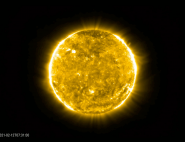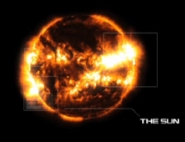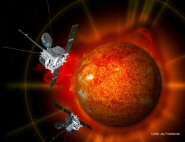CNES projects library
C
I
M
P
S
U
Balloons
Created at the instigation of the scientific community in the early 1960s, and then taken over and developed by CNES, the Balloon programme consists in designing and operating aerostats to carry scientific instruments or test new technologies.
Capable of remaining at an altitude of 20 to 40 km, higher than aircraft and for longer periods than sounding rockets, the balloon remains a unique vehicle for collecting data in situ in the stratosphere. Balloons are environmentally-friendly in that they use neither an engine nor fuel to reach their final destination.
Why send scientific instruments to altitudes of 10, 20 or 40 km?
Since the late 19th century, scientists have mostly been using balloons to study the atmosphere or for astronomical research.
In the atmosphere, balloon-borne instruments can take in situ measurements of winds, quantities of greenhouse gases, aerosols and radiation. Balloons also enable astronomers to observe the Universe using telescopes weighing several hundred kilos flown above the dense layers of the atmosphere.
Balloons can thus complement satellite observations and ground-based measurements.
A better understanding of our planet
Balloons drift through the atmosphere, enabling scientists to study physical and chemical phenomena and take air samples. They have thus been used to study the ozone layer, to search for greenhouse gases and particles, and to investigate monsoon mechanisms in India and Africa.
Perfect for testing satellite equipment
With the development of space activities, the range of balloon applications has widened to include the testing of new technologies. Instruments and equipment designed to be carried on board satellites, including star trackers, thermal cameras and solar cells, are tested under balloons at very high altitudes.
Astronomers, astrophysicists and biologists all use balloons!
Balloons meet the needs of many scientific communities. Astronomers use balloons flying above the dense layers of the atmosphere to capture some invisible radiation that either does not reach the ground very much, such as infrared or ultraviolet rays, or not at all, such as X-rays and gamma rays. Astrophysicists take advantage of certain flights to validate instrument techniques while collecting important scientific data.
The balloon, a aerostatic crane
Balloons are sometimes sent up to high altitudes to release the mock-up of a body that is to re-enter the Earth’s atmosphere (e.g., the heat shield of a planetary probe, a suborbital aircraft, a space shuttle, Martian decelerator, etc.) whose aerodynamics need to be studied on a more representative scale than in a wind tunnel.
Mission's news feed
-

Solar Orbiter images first coronal mass ejections
By happy coincidence, three of Solar Orbiter’s remote sensing instruments captured a pair of coronal mass ejections in the days after February’s close flyby of the Sun. CMEs are...
May 18, 2021
-

Coronal mass ejection captured by STEREO
NASA released images from a Coronal Mass Ejection (CME) captured by the instrument SECCHI on board the two twin probes which form the STEREO mission (Solar Terrestrial Relations...
April 15, 2011
-

Nanoparticles detected by STEREO
A new type of dusts just got discovered in the interstellar medium: nanoparticles which had been accelerated up to several hundreds of kilometers per second by the solar wind-...
May 14, 2009


